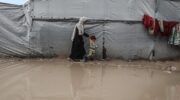The Palestinian Center for Human Rights documents crimes committed in the occupied Palestinian territories in weekly reports. We summarize their reports and stories from other news agencies with the goal of informing Americans of the ongoing violence that Palestinian families face each day under Israel’s occupation of their ancestral lands. The Israeli government receives $3 billion per year in direct military aid from U.S. taxpayers.
May 25, 2017 – May 31, 2017
West Bank
- The Israeli military continued its 50-year long military occupation of Palestinian land in the West Bank, under which the 2.8 million Palestinians living there are subjected to a different set of laws and treatment than Jewish settlers (numbering 588,000) are.
- A thousand Palestinian political prisoners in Israeli jails finally ended their hunger strike on May 26 (day 40), reporting that Israeli officials had conceded to several of their demands. Israeli officials denied, this, saying they only agreed to one extra family visit per month at the request of the Red Cross. Nearly all of the hunger strikers needed medical attention as their health condition became critical.
- Israeli forces attacked demonstrations in support of the Palestinian hunger strikers and teargassed the protesters, causing dozens to pass out.
- Israeli forces attacked the weekly demonstrations against Israeli’s Separation Wall in Bil’in and Nil’in villages, dispersing the protesters with tear gas and live bullets.
- Israeli forces carried out 38 invasions of Palestinian communities, raiding and searching homes, and arrested 53 civilians, 6 of them children.
- A group of Jewish settlers attacked a Palestinian farmer and threw stones at him.
- A group of Jewish settlers entered a Palestinian neighborhood and threw stones at people’s homes and smashed vehicle mirrors.
- Israeli forces erected dozens of temporary checkpoints, restricting movement for even more Palestinians. (There are 27 permanent checkpoints and hundreds of physical roadblocks placed by Israeli forces. Palestinians are prohibited from using 41 roads totaling 700 kilometers in the West Bank; only Israelis can travel on them.)
Gaza Strip
- Israel continued its 10-year illegal land, sea, and air blockade of the Gaza Strip, strictly controlling the movement of all 2 million Palestinians living there.
- Gaza continues to face an electricity crisis as a result of the blockade and repeated bombing of Gaza’s only power plant over the last decade. The plant was closed down in April after it ran out of fuel reserves. Many people only receiving electricity for a few hours a day and are forced to buy bottled water since they don’t have running water. The Health Ministry of Gaza says that a third of planned surgeries have been postponed.
- Israeli navy forces opened fire at fishing boats off the coast of the Gaza Strip most days, and shot a young Palestinian fisherman in the thigh.
- Israeli forces fired live bullets at Gazans demonstrating in several different locations in support of the hunger strikers, wounding seven people, some of them seriously.
- Israeli forces continued to prevent most Gazans from entering or exiting the Strip (via the Israeli-controlled Erez crossing).
- Israeli forces continued to prevent most exports from Gaza, allowing only some produce items, fish and furniture. There is just one Israeli-controlled crossing (Kerem Shalom) for the movement of goods. Israel’s strict limits continue to severely cripple Gaza’s economy. Israeli officials told the U.S. that their goal is to keep Gaza “on the brink of collapse” and “‘functioning at the lowest level possible consistent with avoiding a humanitarian crisis.”
Read the full PCHR report, which also contains daily summaries. The UN Office for the Coordination of Humanitarian Affairs (UN-OCHA) also publishes a “Protection of Civilians” report on the occupied Palestinian territories every two weeks. Their latest report covers May 16 to May 29.





